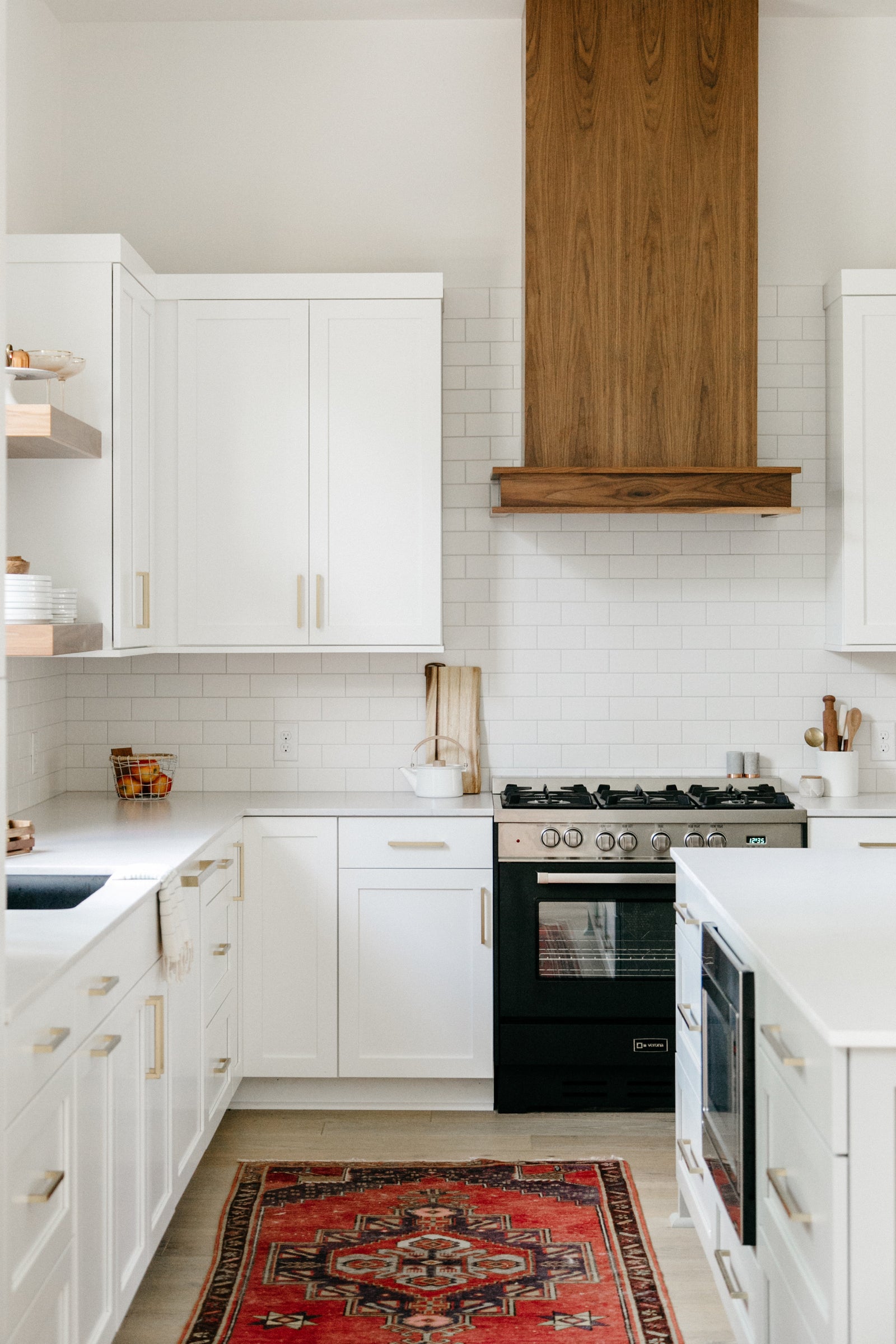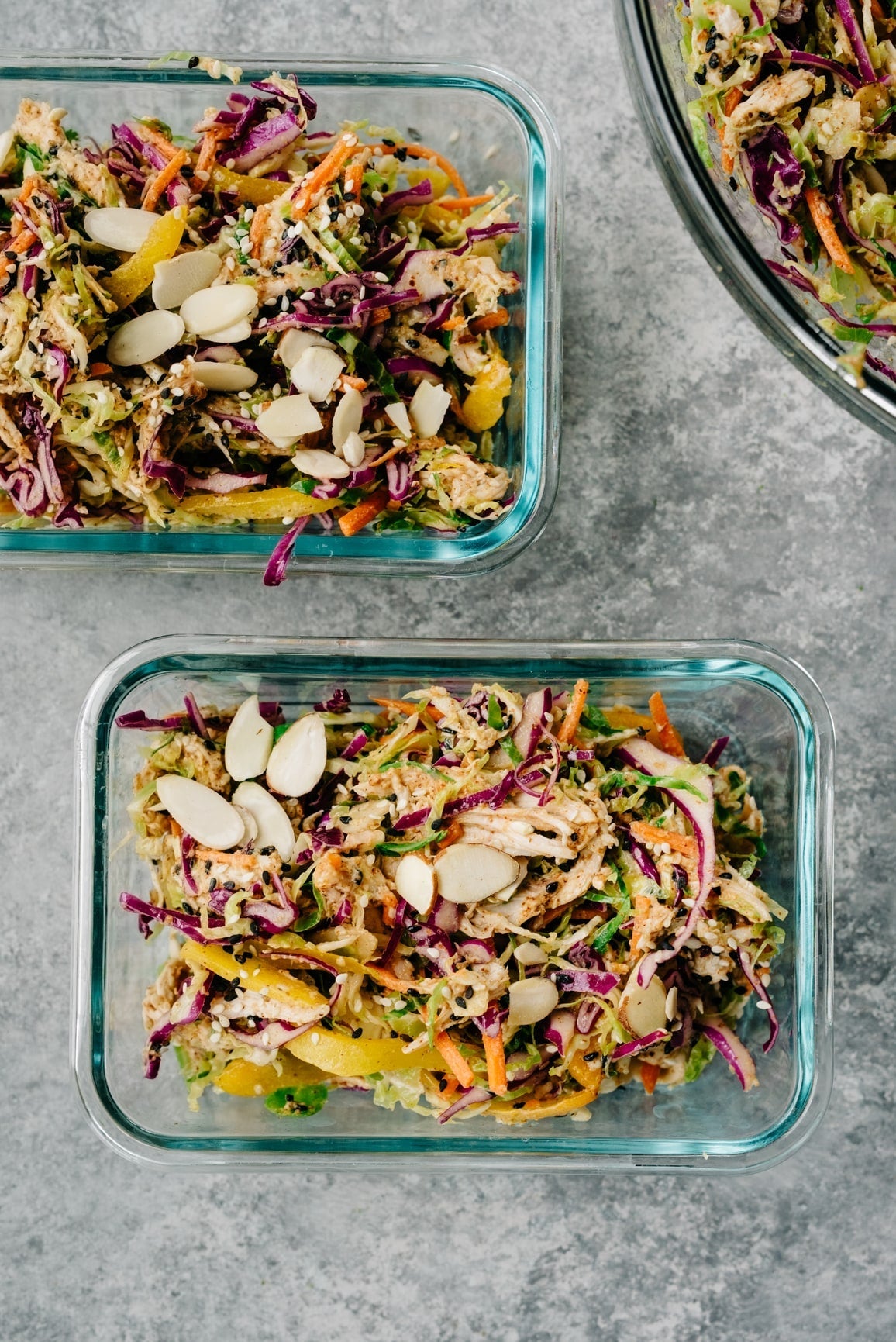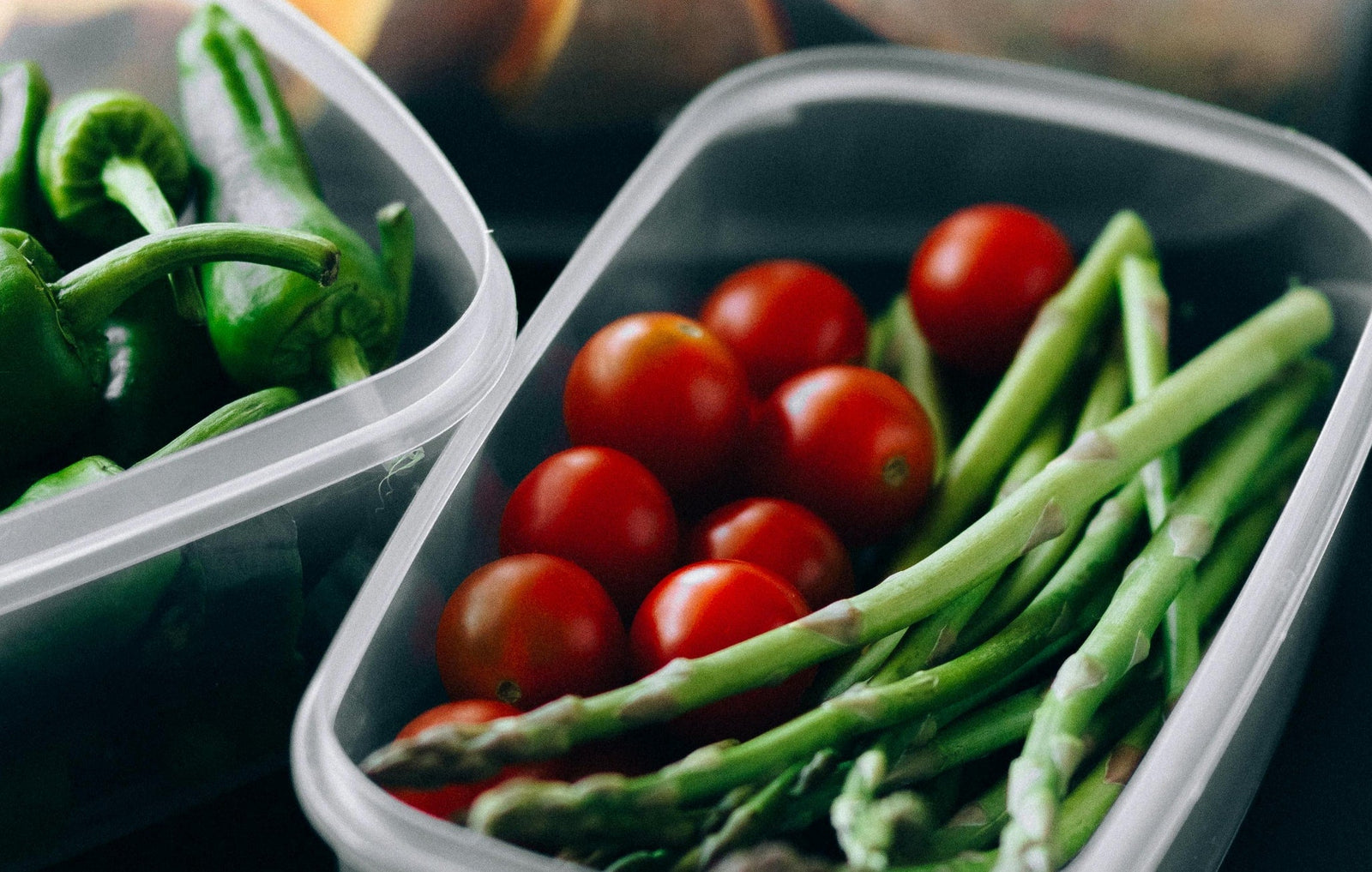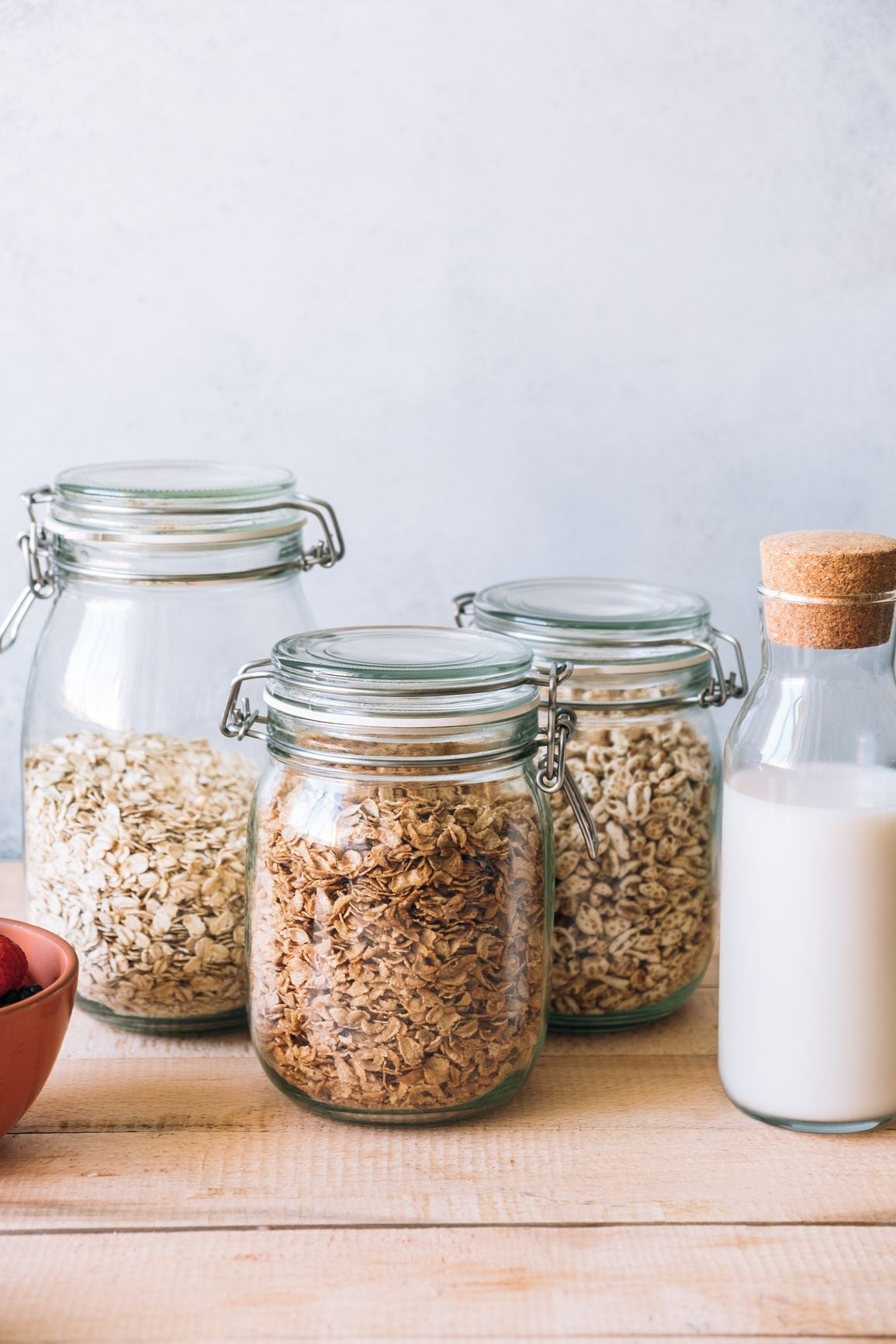8 Ways To Consume Less Plastic

The ill effects of plastic on humans (cancer, birth defects, and hormonal imbalances) have largely been swept under the proverbial plastic industry rug.
Sure, we all heard about the dangers of BPA a few years back, but once BPA-free products started hitting the shelves, many people were falsely comforted and forgot about avoiding plastics.
And who would have ever thought we would be talking about eating the stuff?!
At least until news about the ocean’s plastic pollution started circulating through social media, and especially when this headline rocked our worlds recently: “You May Be Eating a Credit Card’s Worth of Plastic Each Week”1.
Suddenly our dependency on plastic got very personal.
No longer is it enough to stop microwaving in plastic containers or avoid bottled water, we have to take bigger steps to avoid consuming microplastics in our food, water, beverages, air, and environments.
And while this problem may seem overwhelming, there is plenty you can do to reduce your plastic consumption while helping the environment.
Here are 8 ways to consume less plastic:
#1: Drink Loose Leaf Tea
While you probably saw the credit-card consumption headlines, you may have missed this one: “Tea Bags Can Release Billions of Microplastics into Your Drink”.
That’s right. A new study, published in Environmental Science and Technology found: “steeping a single plastic teabag at brewing temperature (95 °C) releases approximately 11.6 billion microplastics and 3.1 billion nanoplastics into a single cup of the beverage”.
How is this possible? Many commercial tea companies use polypropylene to seal their tea bags.
Since this is very new information, our advice is to avoid all bagged tea and drink loose leaf.
We’ll update our recommendations as it becomes more clear which tea companies truly do not use plastic-based sealants.
#2: Invest In An Excellent Water Filter
Microplastics aren’t just in our oceans, new research has found that 94% of America’s drinking water is full of microplastics2.
And while authorities, like the World Health Organization, say they aren’t concerned about health risks, “based on the limited information they have”, good old fashioned common sense would suggest this is not a good thing.
Especially if you drink 8 glasses of water plus, coffee, tea, etc. every single day for your entire life.
So, the smart thing to do is to filter your water, right?
Unfortunately, it’s not that simple.
According to Dr. Roy Speiser, water quality specialist, scientist, and consumer advocate of CWR, Environmental Protection Products, most carbon-based filters aren’t designed to filter out such small particles.
Thus, you want to look for a filter that has been independently tested to remove these microscopic particles to an absolute rating, as opposed to a nominal rating.
For example, carbon block filters can remove some microplastic particles, but they’re only nominally rated to 10 microns…which means anything smaller than 10 will not show up on the test.
Whereas a reverse osmosis or some ceramic filters have an absolute rating of 1 micron—which means they’re catching nearly all the microplastics in the water.
We highly recommend the ceramic water filters from CWR, as they have an absolute rating of 0.2 microns and thus filter out 99.9% of microplastics.
#3: Store Food In Glass Jars on Containers
Food stored in plastic has the potential to absorb a variety of chemicals, including BPA, BPB, and endocrine-disrupting cancer-causing phthalates.
To avoid this, use glass Tupperware or mason jars to store your leftovers and pack lunch items, picnics, snacks for the kids, etc. in stainless steel containers, bento boxes, and/or thermoses.
Lunchbots has a great selection to choose from. ECOlunchbox has a great selection of 100% plastic-free food containers made from stainless steel and silicone, including their ocean-friendly Blue Water Bento line with no-leak lids.
#4: Drink From Glass or Stainless Steel (That Includes Babies and Children)
If you haven’t yet, it’s time to ditch plastic water bottles, baby bottles, and sippy cups in favor of glass.
If glass isn’t available or impractical use a lead-free stainless steel.
Some of our favorite brands are Klean Kanteen, Lifefactory®, or Glasstic for water bottles, LifeFactory or Boob Joovy for baby bottles, and Thermos Foogo for sippy cups.
Mason jars also make excellent “water bottles” on-the-cheap for adults and children—you can even get stainless steel lids and straws for them to prevent spills.
For coolers, we recommend Mountain Valley Spring in glass for use with a glass, ceramic or stainless steel dispenser.
#5: Vacuum and Dust Regularly
Here’s a mind-boggling fact: microplastics ride on household dust 3.
Much of this comes from dryers which leach microplastics from synthetic clothing into the air.
In fact, the main source of microplastic pollution comes from the washing process of synthetic textiles.
To avoid breathing them, eating them, drinking them, etc. dust surfaces regularly and clean your floors using a HEPA vacuum, and/or line dry your clothes and choose natural fibers as much as possible.
Consider purchasing a Guppy Friend wash bag for your synthetic clothes.
#6: Ditch The Coffee Pods, Coffee Makers, and To-Go Cups Already!
Environmental controversy aside: hot coffee made from K-Cups or even coffee makers, which have plastic tubing, tanks, etc., is a major source of plastic.
Instead, we recommend a Presto stainless steel coffee pot, glass or stainless steel French Press, porcelain dripper or all-glass coffee pots like Chemex or Walkure.
Finally, if you get coffee out try and bring your own stainless steel mug to avoid plastics in the lining of some disposable cups and their lids…or at the very least, take off the lid before drinking.
#7: Choose Fresh, Whole, Unprocessed Foods
This one’s a no-brainer: when you buy fresh foods and minimally-processed foods, they have little-to-no contact with plastic, which reduces your exposure.
#8: Be Aware of Baby Products
Items such as teethers, pacifiers, bottles, nipples, and sippy cups should be scrutinized for their plastic content.
Don’t presume anything is made from silicone or rubber unless it’s stated on the label.
The safest teethers are made of 100% rubber with silicone as a second choice, bottles should be made of glass, look for silicone nipples (and dispose at the first signs of wear), choose rubber or silicone pacifiers, and stainless steel sippy cups.
Want to Learn More About The Health Benefits of Avoiding Plastics?
We’ve covered a lot on how to consume less plastic, to learn more about the “why,” check out the following articles:
- BPA in Plastics and Coating: Tips to Remove, Replace, and Restore
- How to Avoid Endocrine Disruptors in your Daily Life
- Our Non-Toxic Baby Registry
- https://www.reuters.com/article/us-environment-plastic/you-may-be-eating-a-credit-cards-worth-of-plastic-each-week-study-idUSKCN1TD009
- https://qz.com/1071764/83-of-tap-water-tested-had-bits-of-plastic-in-it/
- https://www.theguardian.com/environment/2019/aug/14/microplastics-found-at-profuse-levels-in-snow-from-arctic-to-alps-contamination
Categories

Marilee Nelson
Marilee Nelson is an Environmental Toxins expert who has spent nearly 30 years advocating for the chemically-sensitive and chronically-ill. She is a Board Certified Nutritionist, Certified Bau-Biologist and Bau-Biology Inspector and specializes in Food As Medicine. She has helped thousands of families and individuals identify, heal and recover from toxic exposures and is on a mission to revolutionize the way American families view their health.








